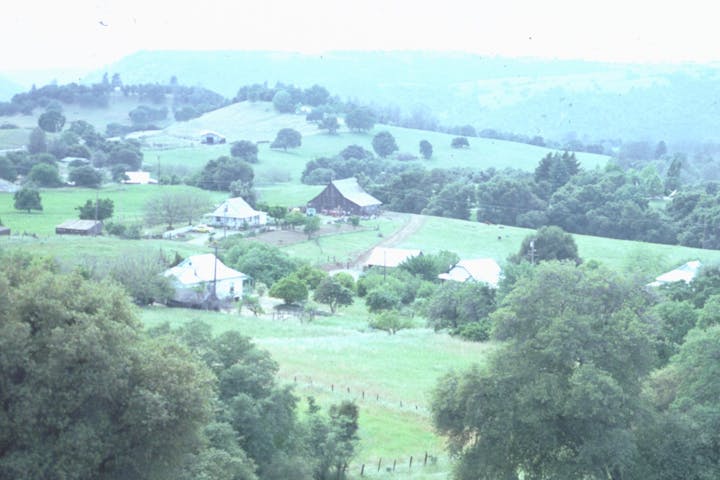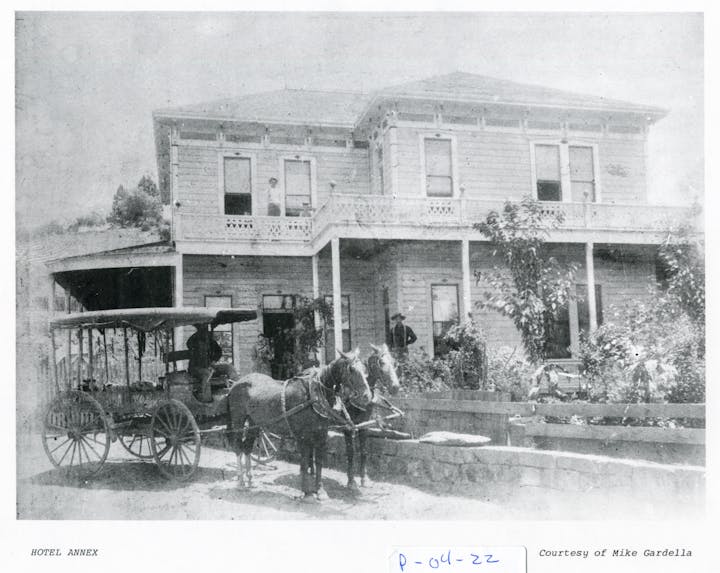Mokelumne Hill
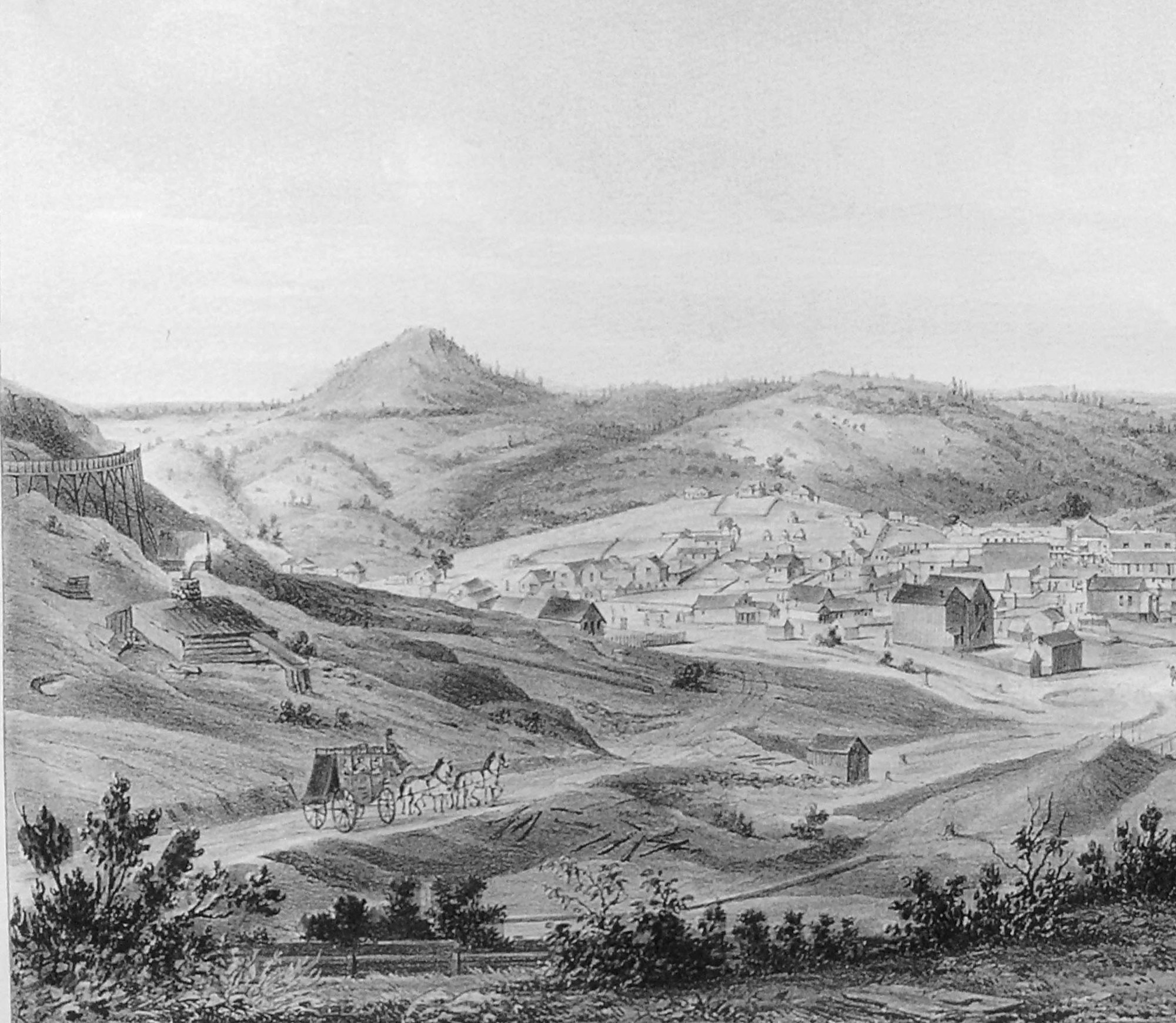
The village of Mokelumne Hill nestles on a small flat surrounded by hills and within a few miles of the Mokelumne River. The first inhabitants of the village were the Miwok Indians who lived along the Mokelumne River, in nearby Happy Valley, in Chili Gulch, and elsewhere. The name Mokelumne was first recorded by Father Narcisco Duran as Muquelumnes in 1817; according to A.L. Kroeber, it is named from the Indian Mokelumni, “people of Mokel”; but it is also listed as a corruption of the Indian name for big river.
The first white men to reside in the area were reputedly the French trappers who settled in Happy Valley in the 1830s. The first known white men mining in the region were Captain Charles M. Weber and a company who mined along the Mokelumne River in the Autumn of 1848 between Big Bar and Lower Bar. A party of miners from Oregon who discovered Big Bar induced a provision wagon to drive to the area and this was so successful that a store was opened in November in Mokelumne Hill by Mr. Syree. Colonel Jonathan D. Stevenson’s Regiment of New York Volunteers reached Mokelumne Hill in 1848 and Samuel Pearsall of the Regiment was the first to discover gold in Mokelumne Hill on the north side of Stockton Hill. In later years Colonel Stevenson claimed to have been the first alcalde of the town.
Mokelumne Hill thus had its beginnings as a trading center for the miners from nearby Chili Gulch, Lancha Plana, Big Bar, Sandy Bar, Poverty Bar, Rich Gulch, Mosquito Gulch, and Happy Valley. By November of 1848 twenty men were engaged in mining, Mr. Syree was keeping his trading tent, G.B. Dickenson and family were running a boarding tent, and the Fourcade brothers had settled there. By 1850 Mr. Grigoire was operating a general store and Davidson and Sommers opened a store in 1851 which operated until 1914.
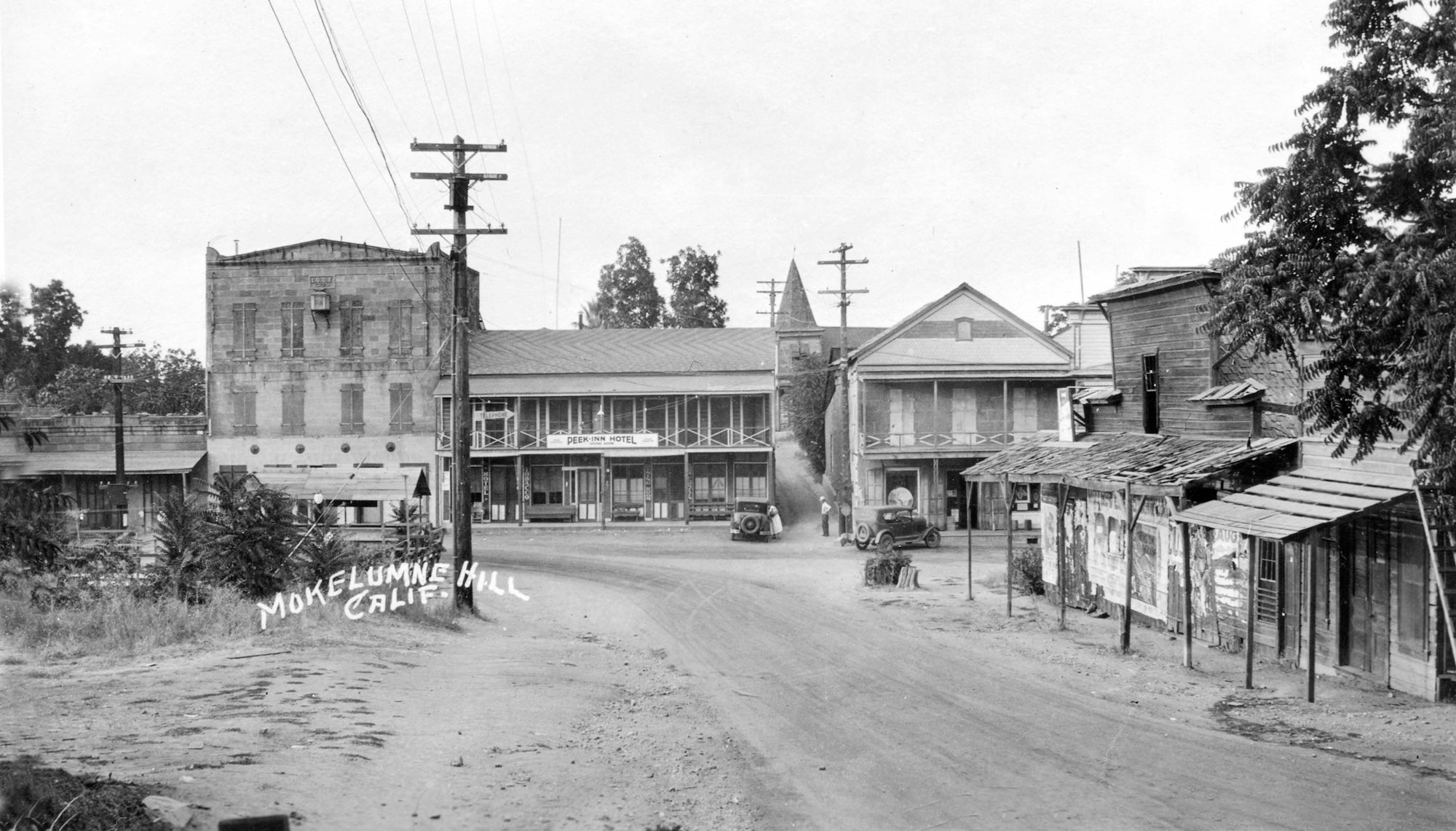
During the 1850s Mokelumne Hill was the leading town of Calaveras County. Large quantities of gold were soon found in the area and it became one of the liveliest, largest, and principal placer mining communities of the Mother Lode. Most of this early mining was done in the Tertiary stream placers which were exposed and were located on the hills: French Hill, Nigger Hill, Stockton Hill, and under Corral Flat.
In later years, quartz mines were discovered around Mokelumne Hill, the most important of these were the Easyz Bird, the Boston, the Hamby, and the Gwin Mine, the richest of them all. Drift mining occurred intermittently on Stockton Hill and Corral Flat until World War II. In later years it was concentrated on Chili Gulch, Old Woman Gulch, under Stockton Hill and Tunnel Ridge. The Flumehouse and the North Star were two of the better known mines. During the 1890s the areas from Chili Gulch and Sport Hill to Chili Junction were extensively hydraulicked and much gold was removed from these Tertiary stream placers, the most important of which was the Great Blue Lead. During the last period of mining activity, dredging was done in Chili Gulch during the 1930s.
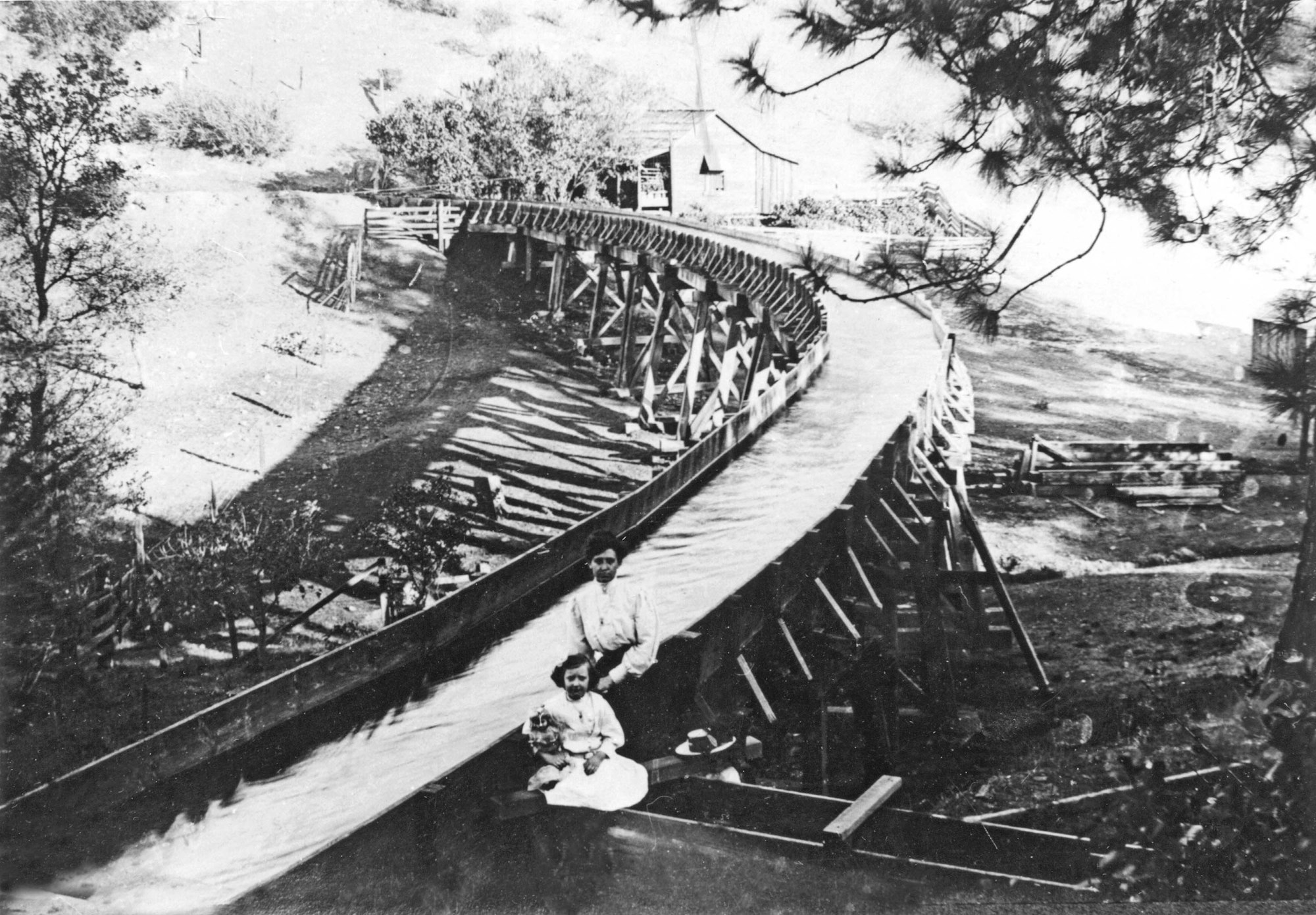
As Mokelumne Hill was dry during most of the year, it soon became evident that water was necessary to successfully work the placers. The Mokelumne Hill Canal and Mining Company was organized in 1852 and for $180,000 a canal was constructed from the South Fork of the Mokelumne River 16 miles to the mining and agricultural districts surrounding Mokelumne Hill. In 1853 water arrived from the Mokelumne River and the area boomed. This company later reorganized as the Mokelumne Hill and Campo Seco Canal Company and extended to Campo Seco and mining camps along its course. Calaveras Public Utility District later acquired the system and utilized it until 1973.
The population of early Mokelumne Hill was extremely diversified, numbering Americans, French, Germans, Italians, Jews, English, Irish, Spanish, Mexicans, Chileans, Chinese, Negroes, and others among them. The town has the only Jewish cemetery in Calaveras County, along with Protestant and Catholic Cemeteries. Numerous lodges, hospitals, and societies in addition to the more common I.O.O.F., Masonic and E Clampus Vitus, were located in the community, including French, Italian, German, and Chilean hospitals and societies and a hall known as the Manor Char Hall. The large Chinese population settled on both sides of east Centre Street and along China Gulch. They operated stores, saloons, and worshipped at two Joss Houses. The so-called French and American War occurred in 1851 on French Hill in a conflict over mining claims.
Due to its importance as a commercial center, Mokelumne Hill was chosen as the site of the Calaveras County Courthouse in 1852, after its removal from Jackson. The original wooden building, located on Centre Street, was burned in the fire of 1854 and a new stone building was constructed just north of the Leger Hotel. This building remained the seat of County government until 1866 when the Courthouse was moved to San Andreas. Because the county seat was located there for ten years, many lawyers, judges, clerks, and county employees settled in Mokelumne Hill. This permanent population and the commerce it engendered required the opening of numerous businesses on the Hill. Among these were soda works, breweries, saloons, doctors' and dentists’ offices, drugstores, billiard and pool halls, hotels and restaurants, carpenters and tinsmiths, bakeries, dry goods and grocery stores, livery stables, meat markets, liquor stores and cigar stores. After the Courthouse moved to San Andreas, business slumped off and advertisements proclaiming the sales of businesses and homes filled the newspapers.
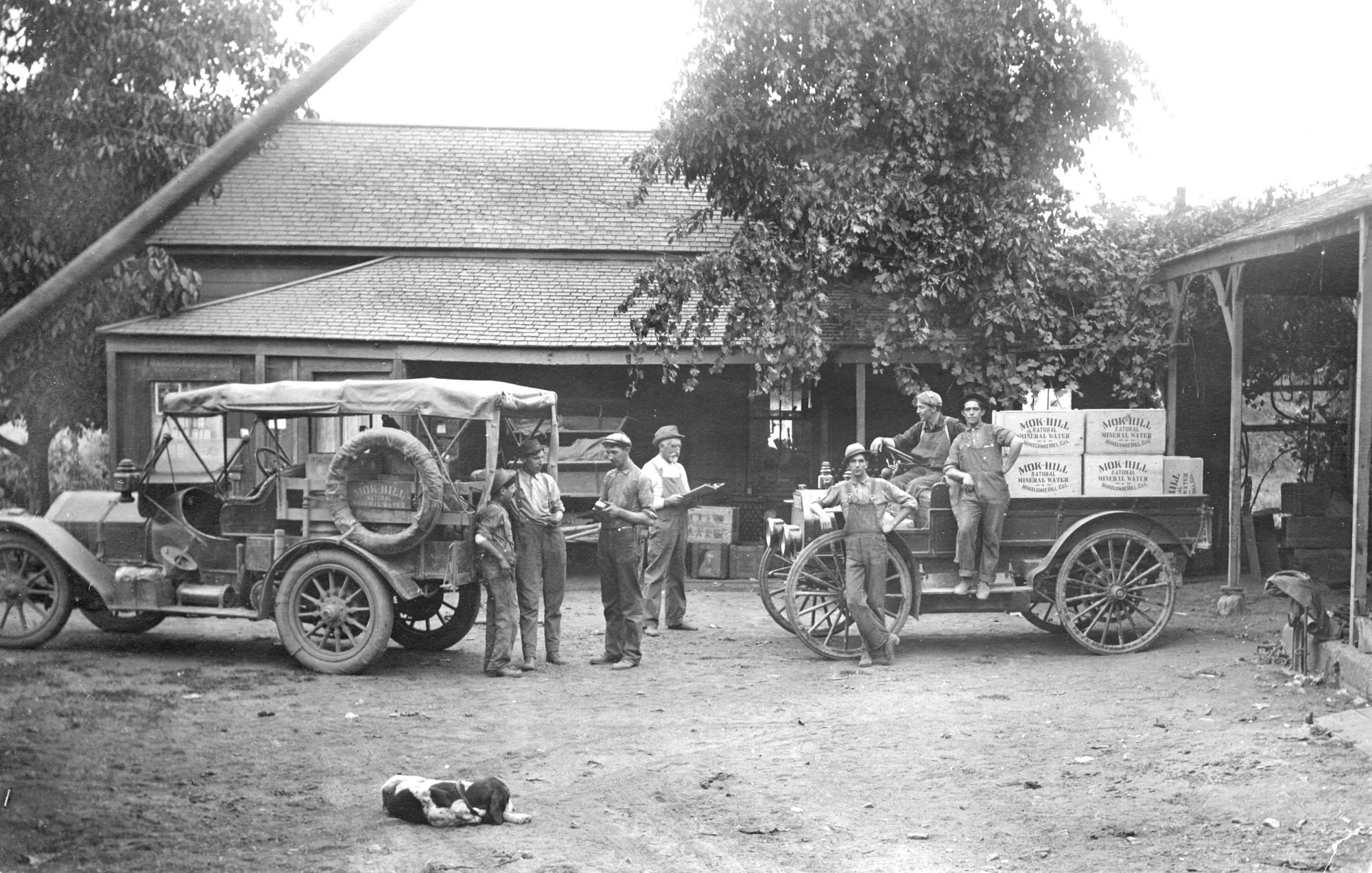
By reason of its immediate growth, Mokelumne Hill experienced many “firsts” during the early years. The first newspaper in Calaveras County was started in October of 1851 by the Calaveras Chronicle in a building located just west of the present I.O.O.F. Hall. The first Code of Laws for Miners in Calaveras County was drawn up in Mokelumne Hill. The post office was established in 1851. A company of militia called the “Calaveras Guards” was organized in 1851 to keep the peace. The fire department was initiated in 1861. Gas lights illuminated the streets in 1857, electrical in 1897. The first telephone was operated in July of 1898. In 1861 the I.O.O.F. added a third story to the former Adams Express Company building, making it among the earliest three story buildings in the County. The first school was taught in a tent by the wife of the Reverend J.F. Fish, the Methodist Episcopal minister, with five pupils in attendance. The first school district was organized in June of 1859. Township No. 6 was established by the Board of Supervisors on August 11, 1857, and included Mokelumne Hill, Big Bar, and Rich Gulch.
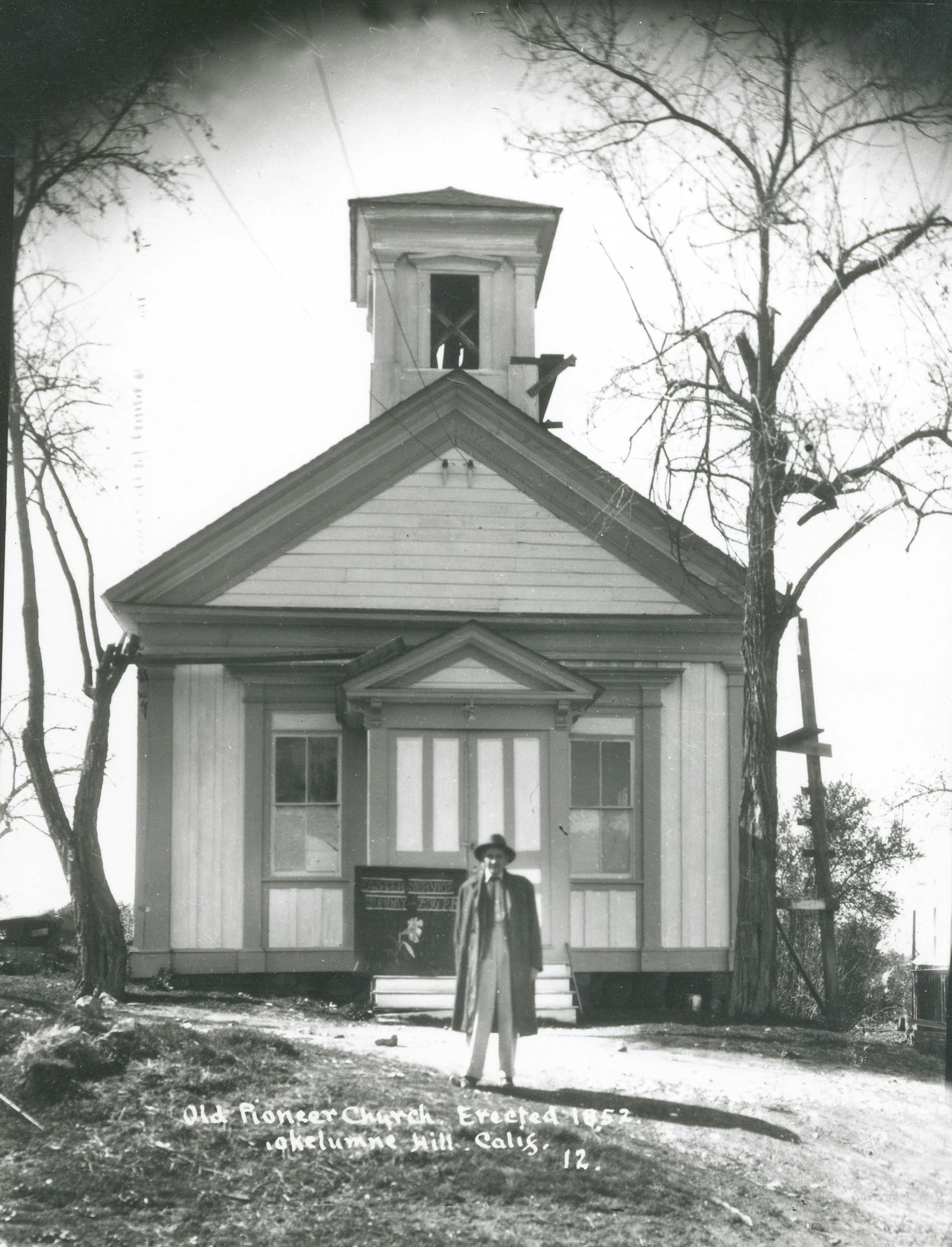
Several churches were established in the early days. The first was the Methodist Episcopal Church in 1852, held in a tent; later a building was constructed adjacent to the present Catholic Church. The First Congregational Church was organized during 1853; the present and oldest Congregational Church in California was constructed in 1856. The St. Paul’s Episcopal Church was dedicated in 1895 and discontinued in 1907. The Catholic Church was founded by Father John Bobard in 1851 and held services in a canvas structure. Various other Catholic Church buildings were erected after fires destroyed them until the present St Thomas Aquinas church was completed about 1900.
There were major fires in Mokelumne Hill in 1854, 1865, and 1874. The fire of 1854 burned everything on Main Street except Gregoire’s Store and everything on Center Street except Sturges’ Store. Immediately after this fire some of the still remaining buildings were constructed of fire-proof stone with iron shutters. These rhyolite building stones were quarried nearby on the hill behind the Mokelumne Hill Brewery (now bisected by Highway 49). Some of the buildings constructed at the time included the I.O.O.F. Hall, Mayer Building, Courthouse, Leger Hotel, Levinson & Bros. Store, Biebrich’s Brewery and Gebhardt’s Brewery. After the fire of 1874, many of the commercial structures were not rebuilt, due to the conclusion of the boom years for Mokelumne Hill as a commercial and political center.
Because Mokelumne Hill was favored with an unusually moderate microclimatic condition for the foothills, it was able to grow many crops successfully. Madam Cataia and Frederick Mayer were early vineyardists and vegetables, fruits, oranges and hay crops were grown prosperously for many years. The Upper and Lower Italian Gardens supplied vegetables and fruits to the miners and homeowners in Mokelumne Hill and the surrounding communities.
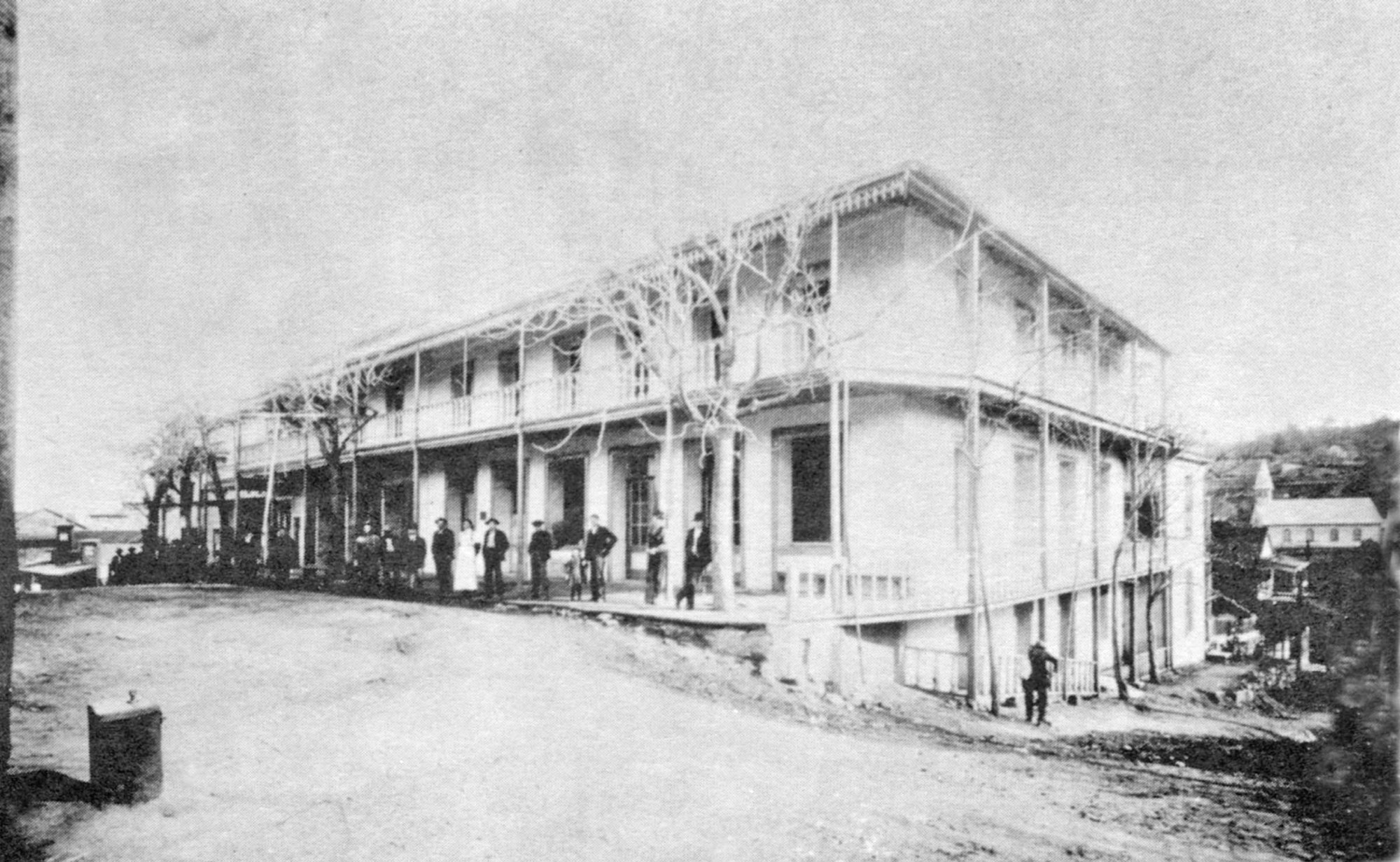
During the latter part of the 1800s, cattle ranching became the most important agricultural enterprise surrounding Mokelumne Hill. Families homesteaded and purchased large landholdings to run livestock and much of the land around the town remains grazing land to this day. In the first half of the 1900s logging became an important industry in the mountains to the east and many of the townspeople went to work in the mills around Glencoe, Railroad Flat, and West Point. After the opening of the Calaveras Cement Company in 1925 many also worked in San Andreas at the plant there. After the cessation of mining activity in the 1940s,
Today, Mokelumne Hill is the community center for the surrounding ranches, homes, mines, and businesses. It supplies the school, small shopping areas, hotel and restaurants, saloons, post office, and center of communication for them. Much as it did in 1850, it does over 150 years later.
Tourism has become a new industry to the town. One cannot find a guide to the Mother Lode without a photograph of the I.O.O.F. Hall or the Hotel Leger. Many of the early homes remain on the hillsides and, together with the historic buildings downtown, make up the tableau of Nineteenth Century life in a small community which has withstood the vicissitudes of the boom and bust economy of the gold regions of the west.
by Judith Marvin




